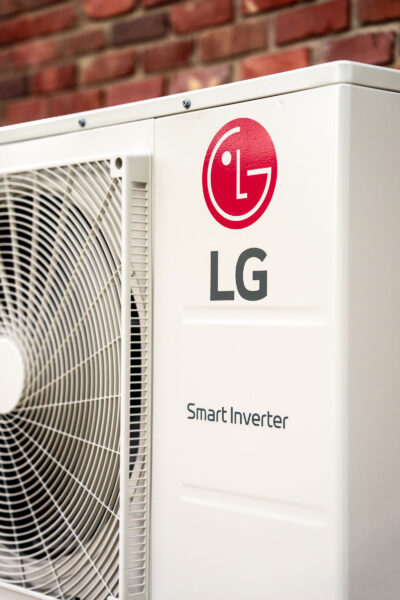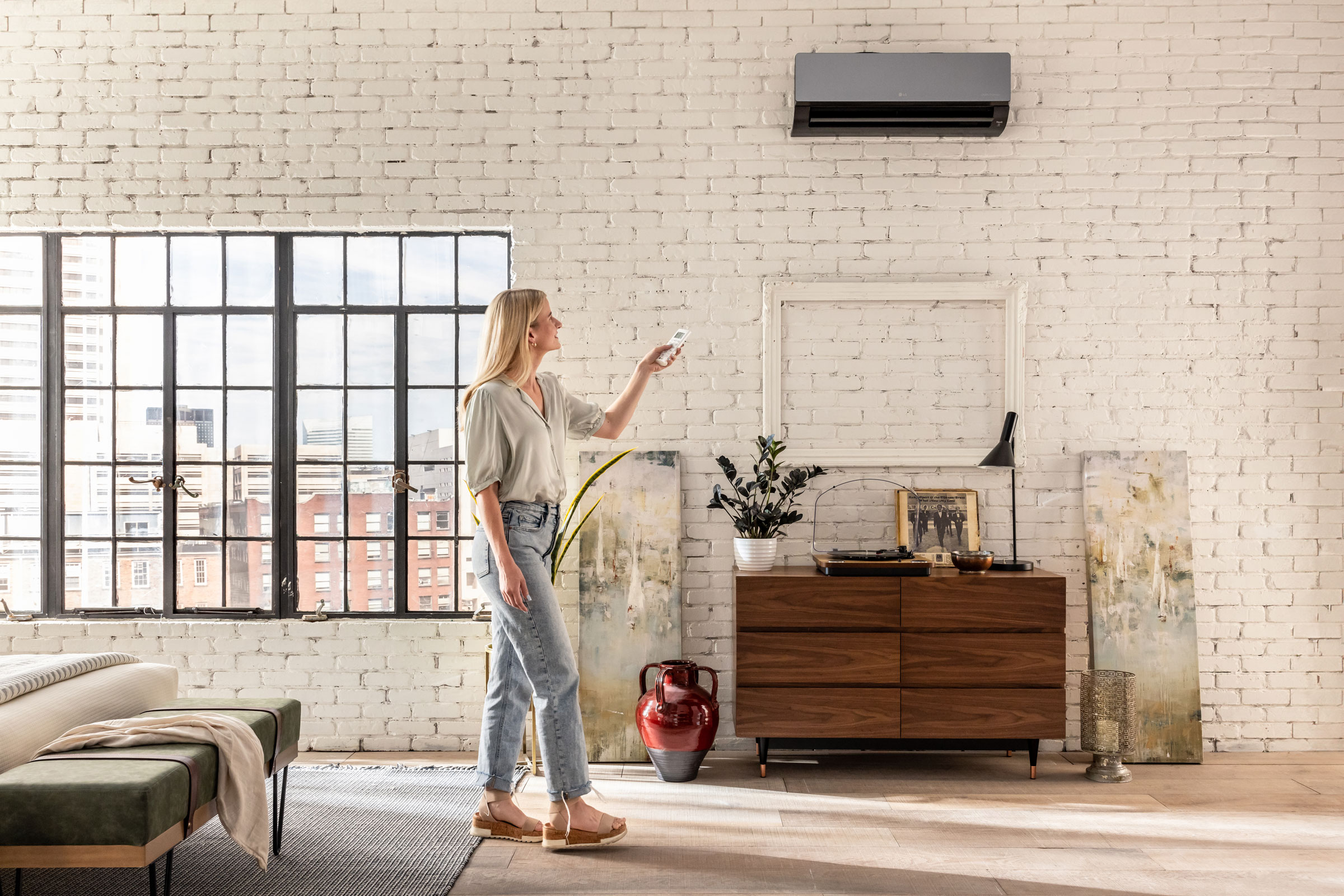Story at a glance:
- Interest and innovation in climate-friendly electric residential and commercial systems was clear at the 2024 AHR Expo.
- Experts at LG Electronics USA expect a 4 to 6% increase in heat pump adoption nationwide this year.
- The success of green HVAC and products like water heaters is a function of innovation, consumer education, government incentives, and regulatory requirements.
A lot of innovation is happening in the HVAC industry. To understand how much, look no further than the 1,600 exhibitors and 50,000 attendees at the 2024 AHR Expo in Chicago in January. Braving icy conditions outside, original equipment manufacturers, installers, engineers, design/build professionals, wholesalers, distributors, facility managers, and educators had little else to discuss beyond ways everyone stays comfortable inside—and to a great extent, how to do so sustainably.
The magnitude of the show was noticeable, sprawling across both the North and South halls of the enormous McCormick Place conference center. Many remarked on how it had a very post-Covid feel. “We see things getting back to the pre-pandemic levels,” says Steve Scarbrough, senior vice president and general manager with LG Electronics USA. “We’re also past the supply chain problems that plagued the building and appliances industry the last couple of years. LG has product in stock and available, ready to satisfy the growing demand for heat pump solutions as the electrification movement continues to grow and evolve.”
LG has product in stock and available, ready to satisfy the growing demand for heat pump solutions as the electrification movement continues to grow and evolve.
AHR, sponsored by the Air-Conditioning, Heating, and Refrigeration Institute, bills itself as the world’s largest HVACR marketplace event. In addition to the expo, educational sessions covered topics like low-global warming potential refrigerants (including training HVACR technicians in handling and installation), VRF test procedures and efficiency ratings, humidity controls to support healthy buildings, and adiabatic humidification technologies for decarbonization.
One of the education sessions at the show covered the ongoing implementation of the Inflation Reduction Act incentives—something LG is watching carefully and excited to ramp up as needed. The act brings opportunities to consumers, businesses, installers, and the company itself. LG currently offers a diverse array of low-carbon, electricity-driven products, and continues to invest heavily solutions that aide in efforts to maximize energy efficiency and reduce dependency on fossil fuels.
The Push and Pull of Energy Efficiency

Photo courtesy of LG Electronics USA
The enactment of the 2022 Inflation Reduction Act, also known as “the climate bill,” makes energy upgrades in things like heat pumps far more affordable to homeowners. By priming the pump, so to speak, it already drives consumer demand. But there are other influences on the adoption of heat pumps, water heating systems, smart appliances, EV charging, and rooftop solar in residential and commercial structures.
Scarbrough recently shared some of his insights on that and on the continuing innovation happening at LG with gb&d.
How does LG stand out at an event like AHR?
We ask the question, “How do we advocate for change?” That’s something we do in many ways, but in particular through consumer education. As almost everyone in this industry knows, the adoption of advanced, low-carbon HVAC systems is driven by consumer demand but also “by the pen,” that is, by regulations and incentives.
How do you educate consumers?
In California alone millions of consumers have purchased at least one LG product.
This overall brand awareness allows us to communicate directly to them about our breadth of offerings, including HVAC solutions, and the incentives and rebates available on products they might be interested in having.
The heat pump market has expanded a lot in California, right?
Yes. In October of last year, we participated in a two-day summit hosted by the California Energy Commission that explored affordable, reliable, and equitable pathways to electrifying buildings. California is all-in on building electrification, so we joined with government, industry, academic, and nonprofit organizations to figure out how to get it done. Importantly, there was a special emphasis on decarbonization for low- to moderate-income customers.
To be clear, home electrification is a major inflection point for us at LG. As Chris Ahn, senior vice president of LG Electronics USA Air Solutions business division, says, we are transforming into a smart life solutions company over the next several years.
What goals came out of that California summit?
The goal is to install 6 million heat pumps in the state by 2030. To do that we have committed to expanding our manufacturing capacity, we’re collaborating with the state’s energy commission to make heat pumps a standard for homes, and we’re working to maximize the efficiency and load flexibility of our heat pumps so we help the state achieve its climate goals while “being good citizens of the electric grid,” as we see it.
Note: The California Energy Commission has endorsed heat pumps as highly efficient electric technology for water and space heating because they produce lower emissions than traditional HVACs and water heaters. The commission’s 2022 energy code establishes heat pumps as standard equipment in new homes (single family), and more than 1.5 million are already in place in the state.
Tell me about the $8 billion LG is investing in 2024 on electrification strategy.
The investment is a strategic combination of R&D and marketing as well as hiring the people needed to make it possible to further achieve sustainability standards and meet regulatory demands. LG is leading the charge to revolutionize the way we use energy to power our homes and appliances, and we want to not only hold onto our leadership position but also continue to bring new technologies and innovation to the market.
California is relatively new to heat pumps, compared to other places?
That’s the power of the pen, in how different state regulations and incentives have a lot to do with where these products are installed. In some states, the regulatory infrastructure is in place to take advantage of the incentives in the Inflation Reduction Act, so in those places, consumers can already get the rebates provided by the bill. But in other states, it will take a few years to get that set up.
What external factors drive sales of advanced sustainable products?
In 2023 mortgage interest rate hikes reduced new home construction. But in the commercial sector things accelerated because the pandemic-related supply chain issues were resolved. We think there will be a slow but steady return in the residential sector in 2024 as interest rates ease, with nationwide growth in heat pump adoption in the 4 to 6% range.
How will LG continue to be a “smart life solutions company?”
Consider the momentum. In 2023 there were more heat pump systems sold than traditional air conditioning systems nationwide.
LG’s product suite includes HVAC, water heating systems, energy storage systems, robots, smart appliances (kitchen and laundry), televisions, and EV charging. In fact, LG can provide products for up to 80% of the electrical demand in your home.
What does the future look like with regard to water heaters and electrification?
The Department of Energy tells us water heaters can account for up to 18% of a home’s energy consumption. Switching to something that is more efficient can have a big impact.
In 2023 LG introduced its Inverter Heat Pump Water Heater, which can save up to 76% on energy costs when compared to a conventional electric water heater. We also offer the Air-to-Water Heat Pump Monobloc, which provides water-pipe based space heat (radiators or in-floor) and hot water.
We also collaborate with numerous industry associations, including Rewiring America, a nonprofit that promotes broad electrification as an environmental, economic, and social issue. Rewiring America speaks of electrification as a way our lives can improve while we save money and the climate.

